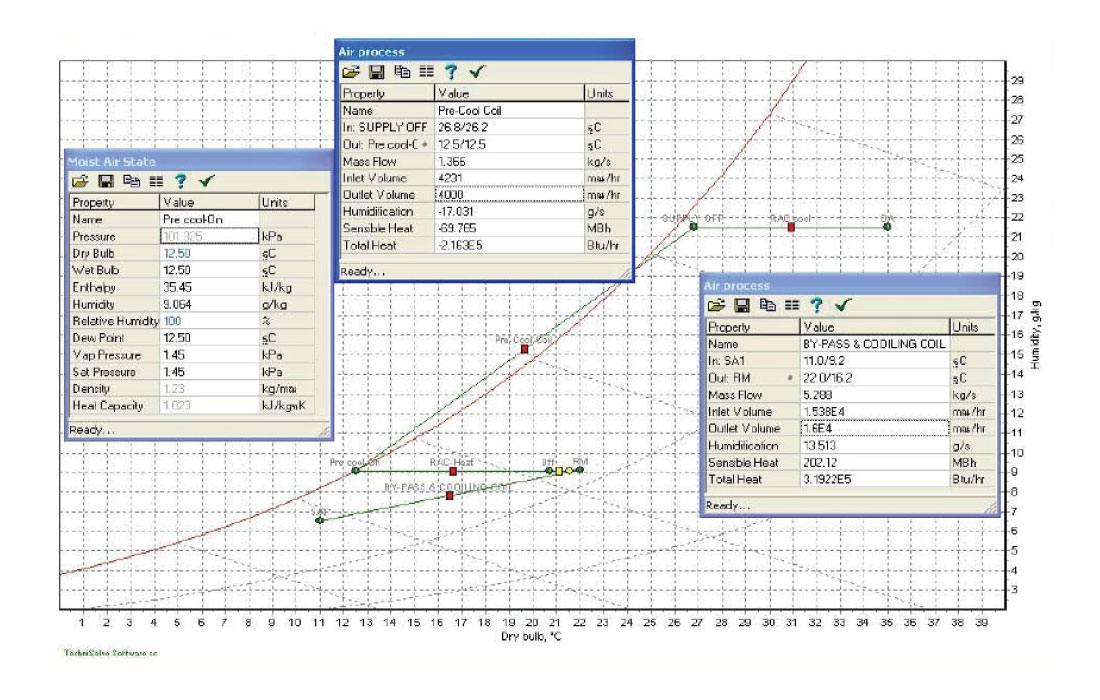CERTIFIED BY ISO 9001 : 2015

HUMIDITY CONTROL ROOM
another quality service
from Co-Pac Engineering Co., Ltd.
Substitute for old technology
Humidity control in air conditioning systems generally uses an evaporator to function to extract moisture from the air. The hot and humid outdoor air through the evaporator will release Sensible Heat, causing the temperature to be lower. If the evaporator has a temperature lower than the dew point, some steam will release latent heat and condense into water droplets. In this case, the dehumidified air is very cold. Overcooled Air is not suitable to pass into the work area. Therefore, it has to use heat from electric coils or steam pipes. Reheating Coil makes the temperature higher to get the air at a comfortable temperature (Comfortable Air) requires high energy to cool the air and hot later as shown in figure.
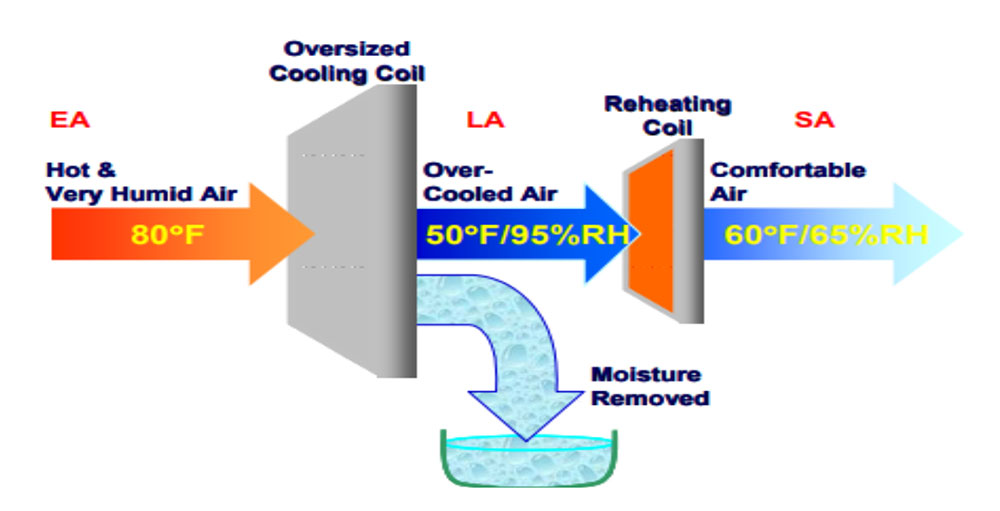
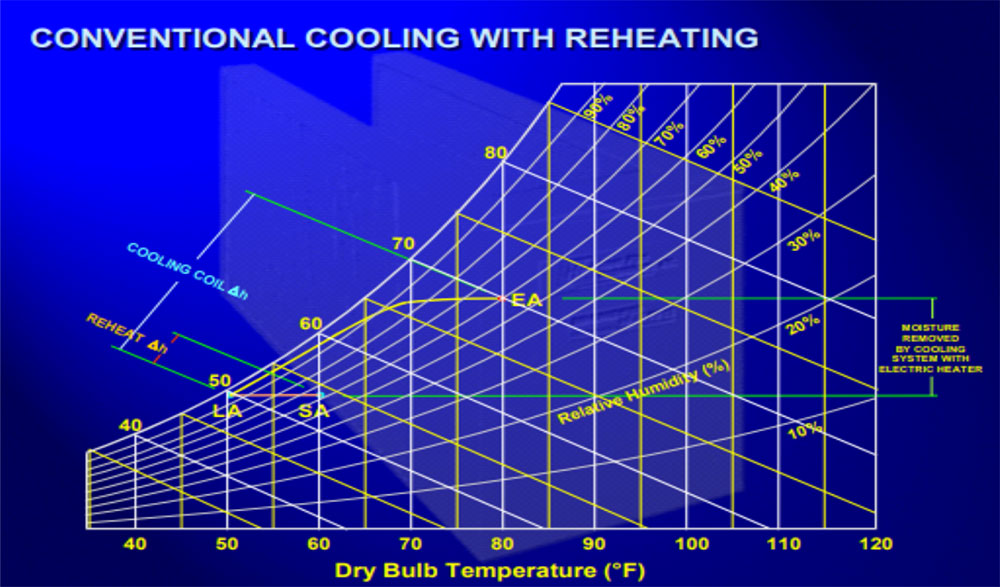
The weather conditions can be shown in the humidity control process in which the evaporator works with the heating coil as shown in the chart. Psychrometric as shown in Fig.
From the chart it can be seen that in the humidity control by using the cooling coil and the heating coil, the main energy used by the cooling coil (from EA to LA) is used to reduce the temperature of the air to cause condensation of water vapor in the air. The energy is used to increase the temperature of the air after passing through the evaporator (Reheat – from LA to SA) by using the heating coil to keep the air at an appropriate temperature for further use.
Using a heat pipe to reduce humidity
Heatpipes can be used to dehumidify air conditioning systems. By installing a heat pipe across the evaporator (Cooling Coil) of the air conditioning system. The installed heat pipe is divided into 2 parts. The first part is called the Precool Heat Pipe Section, which is located through the air inlet before passing through the evaporator coil. When hot air passes through this heatpipe, they will transfer heat to the heat pipe. The air that passes through the evaporator has a lower temperature than normal make the evaporator work more efficiently because the steam can condense a lot The temperature of the air that passes through the evaporator is cooler than general air conditioners (Overcooled Air) as shown in the figure.
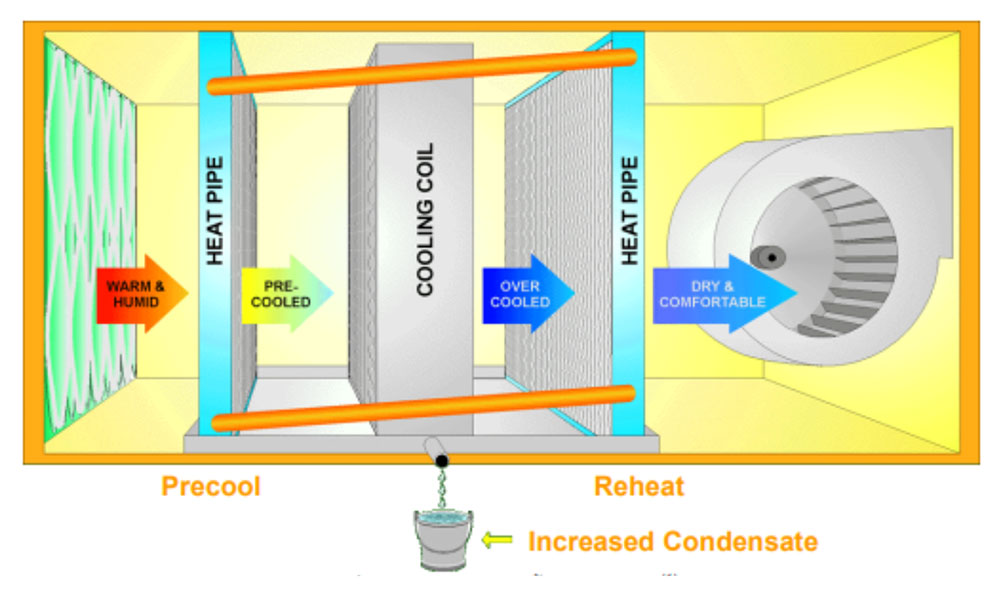
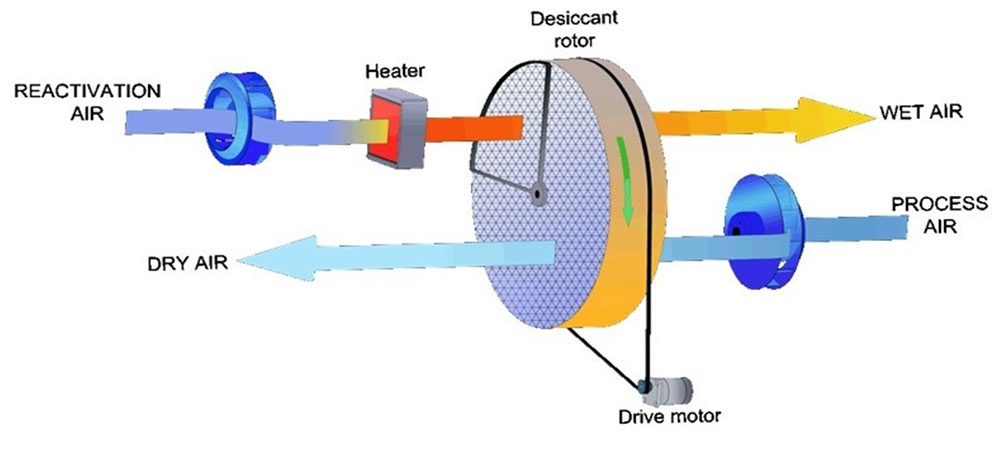
Disiccant Dehumidifier
Working Principle: Desiccant: Adsorption type automatic dehumidifier air will be sucked into the Desiccant and use hot air to blow the moisture away from the desiccant Silica gel material. Then continually circulates suction and dehumidification as the picture shown.
Popular place Desiccant dehumidifiers are enclosed chambers with ambient temperature not exceeding 25°C. Such as production room, library, material storage room, painting room, etc., with the need to control the relative humidity to be less than 70%RH without the limitation of large rooms and can design an integrated system as an efficient air conditioning and dehumidification system.
Desiccant dehumidifier
for Dry room
The special products line that are sensitive to moisture such as Lithium Ion batteries manufacturing facilities, Research & Development laboratories. It is necessary to be designed to operate an absorbent dehumidifier that can reduce humidity to low while the air temperature is low too. ( extremely low dry air – down to -50C dew point at atmospheric pressure, the maintained conditions inside the dry room 20C and RH less than 10% or lower)
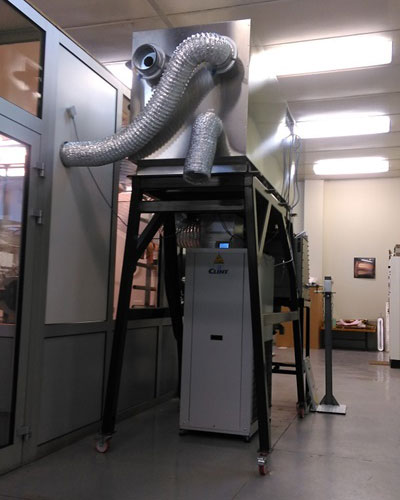
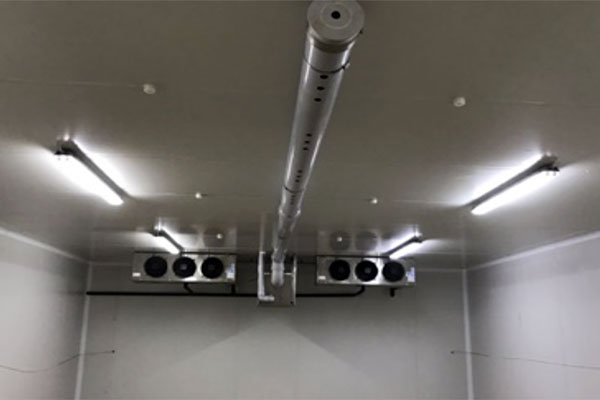
Desiccant dehumidifier for Cold room, Meat, Cheese, Sausage, Beer, Frozen products
Many types of food that must be kept refrigerated or frozen. The question is how to keep the quality of the food for a long time and there are no bacteria or mold problems. The answer is that it must be stored in a place where both temperature and humidity are within the proper range (cold and dry) with that type of food. Absorbent dehumidifiers can reduce humidity to very low levels and the temperature is also low.
RUND AROUND COIL : Program that improve humidity control
RUND AROUND COIL used to optimize humidity control in the clean room system. It is a set that increases the artificial load to the room which relies on heat in the atmosphere to operate through 2 sets of coil panels by relying on water as a medium for heat exchange and using force from a pump which has the following working principle.
Initially, the process of Filled outside air at 35 °C at 60%RH humidity (set the air volume to be 4,000 CMH) through the C-RAC coil, which is supplied with water at 20 °C. The result is that the wind through this coil will get a temperature of 26.8 °C near the Dew point, which this process will not reduce humidity at all. (From the P-H Diagram, it can be seen that it is a straight line at 21.53 g/kg of moisture.) The water that comes out of this coil has a temperature of about 26 °C (It meets the characteristics of heat exchangers. is the wind coming out of the coil will have the same temperature as the water temperature. But in practice, the wind temperature will be slightly higher because the area will be loaded on the other side as well especially where the Air Handling Unit will supply air due to the motor load.) Then the wind will go through the Pre-Cool Coil, which has water at 7 °C to raise and exit at 11 °C. That means that the wind coming out of the coil panel must be higher than 11 °C, which in the P-H Diagram or the RAC calculation program, the temperature is 12.5 °C. After that, the wind that passes through the Pre-Cool coil at 12.5°C will run into the H-RAC coil, which has water supplied from C-RAC at a temperature of 26 °C to supply. As a result, the wind coming out of this coil panel has a temperature of 20.7 °C at a humidity of 9.064 g/kg and a relative humidity of 59.36 %RH, and the water exiting the H-RAC coil panel has a temperature of 20 °C and pass through the C-RAC coil panel.

